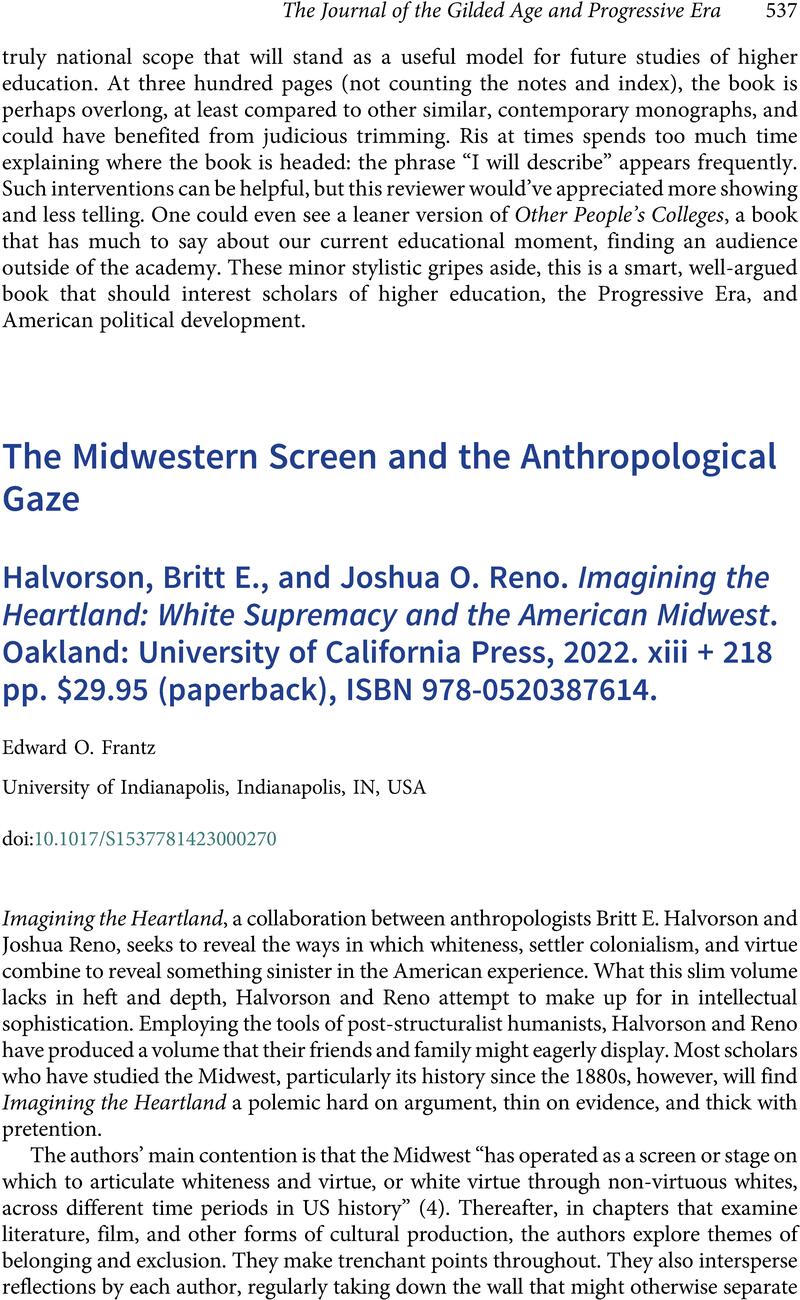No CrossRef data available.
Article contents
The Midwestern Screen and the Anthropological Gaze - Britt E. Halvorson, and Joshua O. Reno. Imagining the Heartland: White Supremacy and the American Midwest. Oakland: University of California Press, 2022. xiii + 218 pp. $29.95 (paperback), ISBN 978-0520387614.
Review products
Britt E. Halvorson, and Joshua O. Reno. Imagining the Heartland: White Supremacy and the American Midwest. Oakland: University of California Press, 2022. xiii + 218 pp. $29.95 (paperback), ISBN 978-0520387614.
Published online by Cambridge University Press: 15 December 2023
Abstract
An abstract is not available for this content so a preview has been provided. Please use the Get access link above for information on how to access this content.

- Type
- Book Reviews
- Information
- Copyright
- © The Author(s), 2023. Published by Cambridge University Press
References
1 Merle Curti, “Intellectuals and Other People,” American Historical Review 60 (January 1955), 281.


